Explore the 'giant' underground sewer line under the To Lich riverbed
The 15km underground sewer line of the Yen Xa Wastewater Treatment Plant project has been completed, preparing to rescue the polluted To Lich river. Special technology is also applied for the first time to a project in Hanoi.
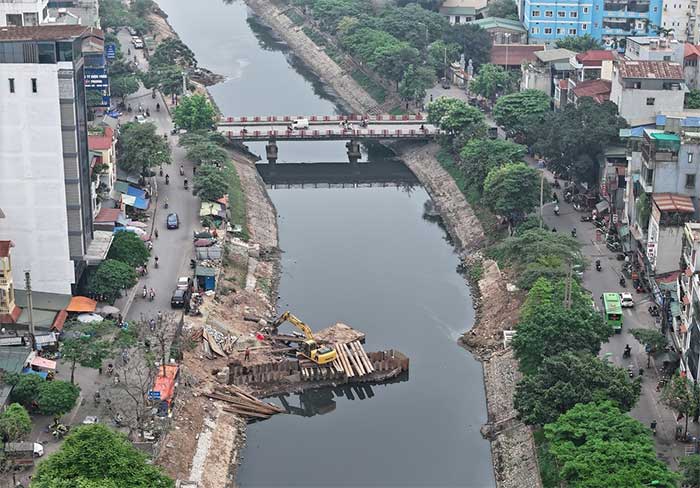
8 years since construction began, the Yen Xa Wastewater Treatment Plant project (Thanh Tri district, Hanoi) is rushing to complete many important items for trial operation by the end of this year. The project is divided into 4 packages, of which package number 2 is to build a wastewater collection system for To Lich river constructed by Tekken Company (Japan). This bidding package began implementation on March 16, 2020, and has so far reached 93% progress.
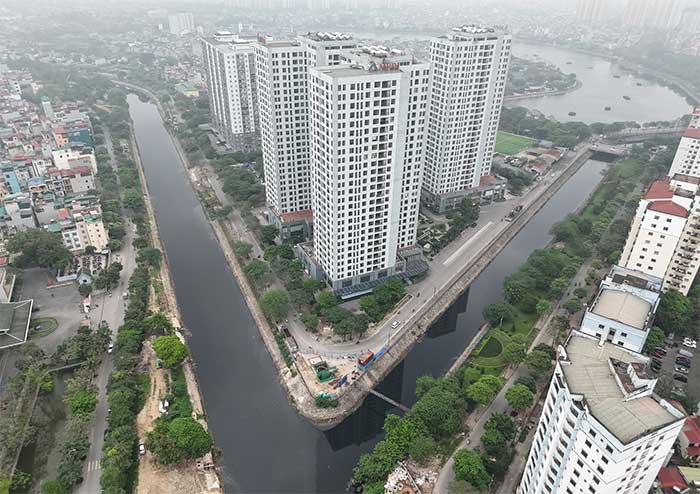
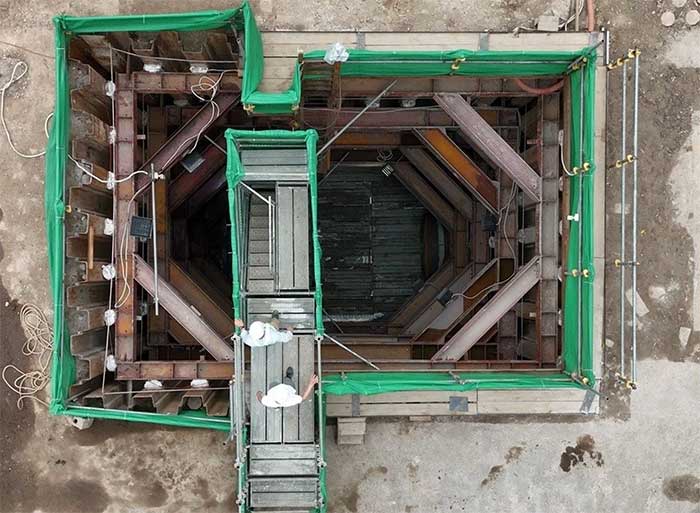
With this package, the contractor will install an underground sewer system running along To Lich river, starting point from Hoang Quoc Viet intersection to ending point at To Lich - Lu river intersection in Hoang Mai district (locality). position in the photo). The unit uses the open excavation method for a small part of the route, and the remaining part applies new technology of underground jacking using robots.
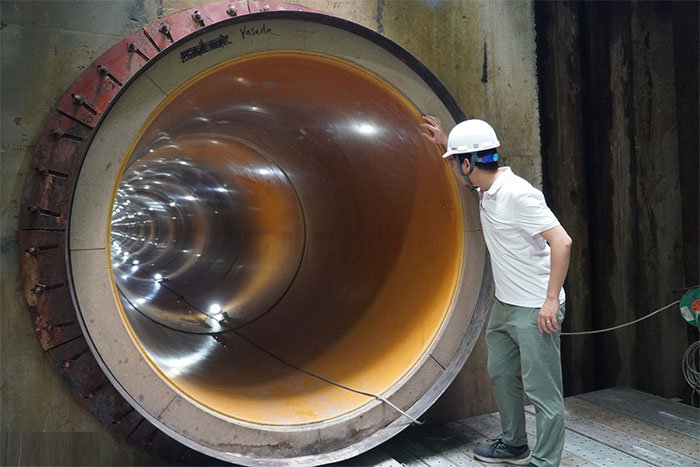
With underground jack drilling technology, the contractor will initially dig wells vertically, reinforce them with piles, then bring the robot to the bottom of the well and drill horizontally to connect the wells together. The underground sewer connecting two wells at the intersection of To Lich - Lu river has the longest distance (550m), located at a depth of 13.44m compared to the road surface. The sewer cover is made of concrete coated with waterproof and anti-corrosion epoxy paint.
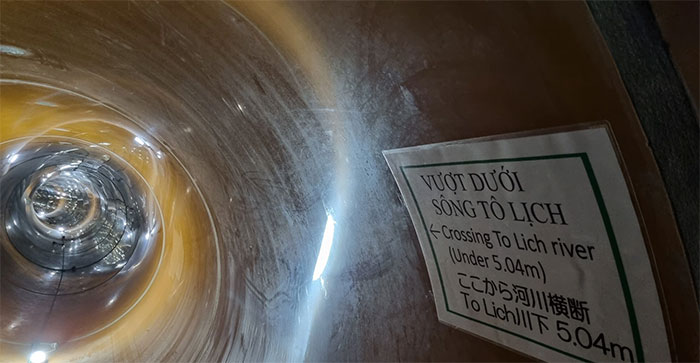

On the route running along the To Lich river, the sewer line will change depth at different locations and have many points going under the bottom of the To Lich river.

Mr. Chong Jiun Yiat, Project Director of Package No. 2, said that underground jack drilling technology was applied for the first time to a project in Hanoi. With this package, Tekken has completed 100% of the open excavation and underground jacking works, the remaining 87% of the progress of manhole construction and 85% of the installation of branch sewer lines. The contractor is sprinting to achieve the goal of completing the work by the end of this year. The biggest problem currently is that Hanoi has terminated the contract with the contractor for package No. 3 (installation of the sewer system on Lu River). Therefore, Tekken said that the installation of manholes at the intersection of Lu River - To Lich River has not been completed.

At the underground well location, the unit has also designed the road up and down the sewer to serve the construction process. Mr. Chong assessed that well construction is the most difficult item of this bidding package, because during the implementation process, the contractor must relocate many above-ground utility works such as water supply pipes, sewers, and telecommunication cables. communications, electrical wires. The unit both performs construction and monitors whether jacking will affect the infrastructure above ground.

On April 16, Secretary of the Hanoi Party Committee Dinh Tien Dung and the working group inspected the construction site of package No. 2, directly inspecting the underground sewer system under the To Lich river in the junction area. Lu River - To Lich River (Photo: New Hanoi).

Wastewater, after passing through the sewer system, will follow the path to Yen Xa Wastewater Treatment Plant. The construction of this factory (package number 1) has been 96% completed, waiting for synchronous connection with packages number 2 and number 4 (construction of a sewer system for part of the Ha Dong area and the new urban area). for trial operation this year.
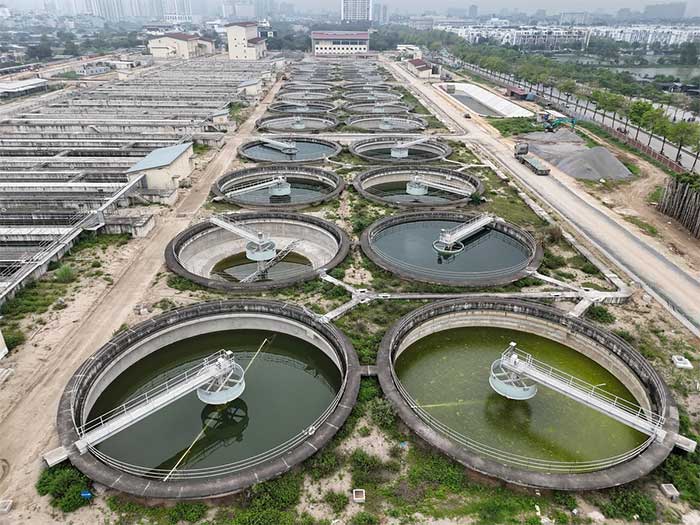
Hanoi City's Technical and Agricultural Infrastructure Construction Investment Project Management Board (investor) is also asking the Hanoi Department of Construction to soon comment on the policy of continuing to invest in 9 primary sedimentation tanks. supply and 6 gravity sludge compression tanks with city funds. This is to ensure completion of the plant's treatment process, water replenishment solutions and wastewater sludge treatment technology according to the city's direction.

Diagram of wastewater pipeline from To Lich River to Yen Xa Wastewater Treatment Plant (Graphic: Ngoc Tan).
After being put into operation, the project will contribute to the treatment of domestic wastewater in 7 districts: Hai Ba Trung, Dong Da, Ba Dinh, Tay Ho, Cau Giay, Ha Dong and Thanh Tri. Hanoi also hopes that the project will "rescue" the capital's polluted rivers including To Lich river, Lu river, Set river and part of Nhue river.
Yen Xa wastewater treatment system project includes construction of a wastewater treatment plant with a capacity of 270,000m3/day and night; Construction of collection sewer system, cover sewer and connection system (along both sides of To Lich and Lu river), Ha Dong new urban area. Total length is about 52.62km.
In particular, the factory was built in Thanh Liet commune, Thanh Tri district with an area of about 13.8 hectares.
The total investment of the project is 16,293 billion VND, with more than 84% being ODA loan from the Japanese Government.
The project has been implemented since 2016, aiming for completion in 2020, delayed until 2022 but has not yet been able to operate. The new milestone Hanoi has set to operate this system is 2025.
- He completed the 6.3 billion USD super sewer
- Explore the huge sewer system in Tokyo
- 'Endoscopy' with underground plastic equipment
- Close-up of the
- Roman sluice can still be used after 2,300 years
- The salamander 'fossil live' stuck two years in the sewer pipe
- Explore the world's first underground park
- Huge sewer pipes underneath London
- Video: Death cracks devour the river after a night
- Robots detect failures in sewers
- The first underground station of Ho Chi Minh City is gradually revealed
- 7 impressive scale works underground
 Norway built the world's tallest wooden tower
Norway built the world's tallest wooden tower Kremlin
Kremlin Ashurbanipal: The oldest royal library in the world
Ashurbanipal: The oldest royal library in the world Decoding the thousand-year construction of Qin Shihuang shocked the world
Decoding the thousand-year construction of Qin Shihuang shocked the world There is a strange river in Russia, no water but still hear the sound of babbling all year round
There is a strange river in Russia, no water but still hear the sound of babbling all year round  Top 8 longest rivers in Vietnam
Top 8 longest rivers in Vietnam  Why are there so many giant fish flooding the Three Gorges Dam but no one dares to catch them?
Why are there so many giant fish flooding the Three Gorges Dam but no one dares to catch them?  Tigris River: The Origin of Human Civilization
Tigris River: The Origin of Human Civilization  Antarctica's longest river flows back out of the sea
Antarctica's longest river flows back out of the sea  The only lake that flows into both the Atlantic and Pacific Oceans
The only lake that flows into both the Atlantic and Pacific Oceans 